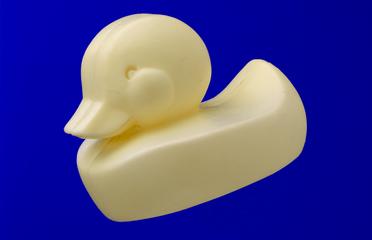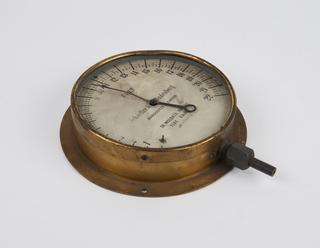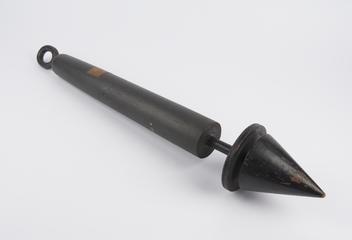Wooden models of weights from Baillie weight-detaching apparatus for deep sea sounding
The Challenger Expedition, organised by the Royal Society and UK Hydrographic Office, circumnavigated the globe in order to study the physical, chemical and biological characteristics of the deep sea. Culminating in a series of detailed scientific reports, the expedition has sometimes been claimed to be the origin of modern oceanography. HMS Challenger, after which the expedition was named, was captained by Captain George Strong Nares; Scottish naturalist Charles Wyville Thomson led the six-man scientific team.
The Baillie sounder’s sinking weights were placed on the sounding tube and suspended by the ring and wire to two shoulders that projected from the sides of a sliding rod working in the upper part of the sounding tube. On touching sea bottom and the sounding line slackening, the sinker weights drew the sliding rod downwards. The shoulders passing within the sounding tube threw the wire off and the weights were released. The lower portion of the tube, to which a valve was attached, received the specimen of the sea bottom.
The weights were adjusted according to the ocean depth. With three hundredweight (152 kg) sinker weights it could take well over an hour for the sounder to reach bottom in 4000 fathoms (7315 metres).
- Object Number:
- 1918-22 Pt1
- type:
- weights








